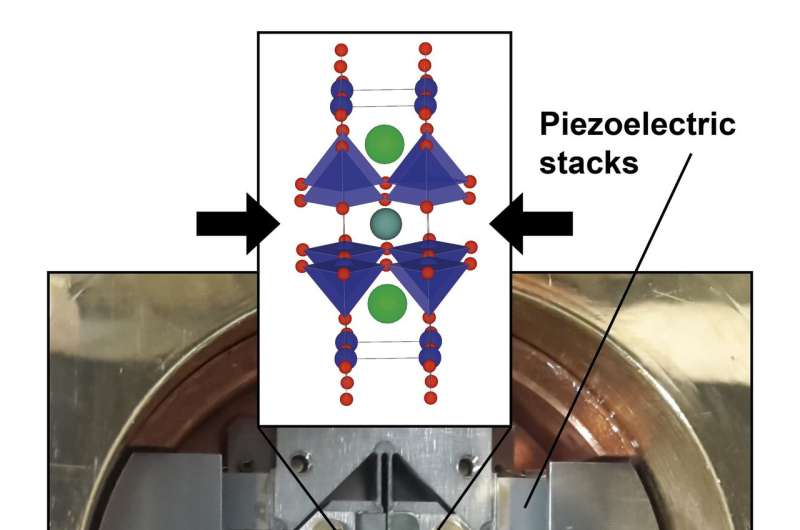Researchers examine competing states in high-temperature superconductors

High-temperature superconductors can transport electrical energy without resistance. Researchers at Karlsruhe Institute of Technology (KIT) have carried out high-resolution inelastic X-ray scattering and have found that high uniaxial pressure induces a long-range charge order competing with superconductivity. Their study opens up new insights into the behavior of correlated electrons. The study is published in Science.
Superconductors transport current without losses, but only below a certain critical temperature. Conventional superconductors need to be cooled down almost to absolute zero, and even the so-called high-temperature superconductors require temperatures of around -200 degrees Celsius to transport current without resistance. Despite this, superconductors are already in widespread use. To develop superconductors that work at even higher temperatures—possibly up to room temperature—and therefore significantly contribute to an efficient energy supply, electronic states and processes involved in the formation of the superconducting condensate need to be understood at a fundamental level.
Researchers led by Professor Matthieu Le Tacon, director of the Institute of Solid-State Physics (IFP) at KIT, have now made a significant step forward. They have shown that high uniaxial pressure can be used to tune the competing states in a high-temperature superconductor. Using high-resolution inelastic X-ray scattering, the scientists examined a high-temperature cuprate superconductor, YBa2Cu3O6.67. In this complex compound, copper and oxygen atoms form two-dimensional structures. Changing the charge carrier concentration in these planes yields a variety of electronic phases including superconductivity and charge orders.
In the charge ordered state, the electrons 'crystallize' into stripe-shaped nanostructures. This electronic state is usually observed in these materials when superconductivity is suppressed using very large magnetic fields, making it hard to investigate using conventional spectroscopic tools.
Inducing this state in YBa2Cu3O6.67 using uniaxial pressure instead of magnetic fields allowed the researchers to study its relationship to superconductivity using X-ray scattering. They identified strong anomalies of the lattice excitation connected to the formation of the charge order. "Our results provide new insights into the behavior of electrons in correlated electron materials and into the mechanisms yielding to high-temperature superconductivity," says Professor Matthieu Le Tacon from KIT. "They also show that uniaxial pressure has the potential to control the order of the electrons in such materials."
More information: H.-H. Kim et al, Uniaxial pressure control of competing orders in a high-temperature superconductor, Science (2018). DOI: 10.1126/science.aat4708
Journal information: Science
Provided by Karlsruhe Institute of Technology




















